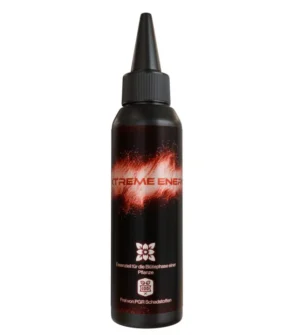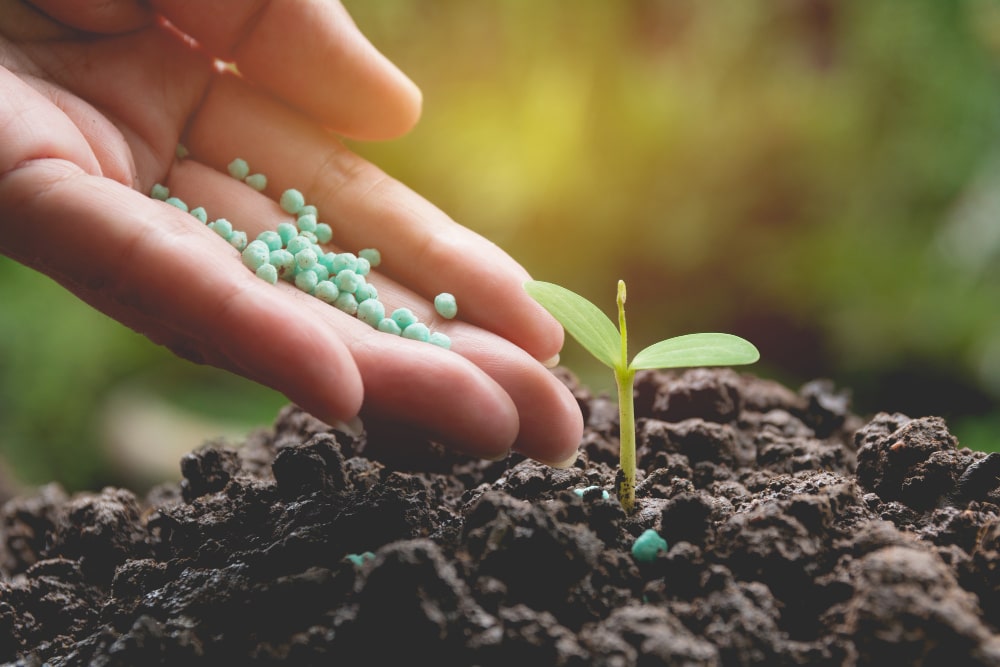In the world of hemp cultivation, healthy plant growth is crucial, and proper fertilization plays a central role in this. However, it can be easy to overdo it with the fertilizer and damage the plants. In this blog post, we explain what hemp over-fertilization is, how to recognize hemp over-fertilization and what the causes and remedies are.
If you grow in one of our Bonsanto Mini Growboxes, you’re in luck! With us, over-fertilization is very unlikely, because if you combine our grow boxes with Bonsanto grow accessories such as the “Premium Soil” and the “Organic Boost”, the components are coordinated in such a way that over-fertilization is unlikely. This is true even if you are a beginner in cannabis growing. Simply follow our Bonsanto cultivation instructions (you can find them here) and nothing will stand in the way of healthy plant growth and a successful harvest.
Inhaltsverzeichnis
What is hemp overfertilization?
Hemp overfertilization, also known as nutrient burn, describes the condition in which your hemp plant receives too many nutrients, usually in the form of fertilizers. Although cannabis has a high demand for nutrients, which is important for the growth and development of the plant, too many nutrients can also be harmful. In addition, nutrient burn is difficult to remedy.
If these nutrients are supplied in excessive quantities, they can impair your cannabis plant’s ability to absorb water and perform other vital functions. Therefore, you should be careful not to over-fertilize your plant. We explain how fertilizing works and how many nutrients cannabis plants need in another blog post on the topic of “Fertilizing cannabis for a high-yielding harvest”.
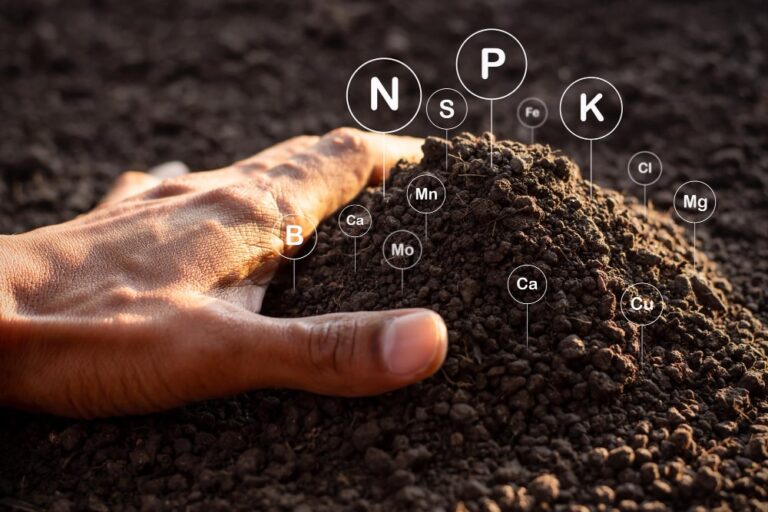
How to recognize hemp overfertilization?
There are various signs and symptoms by which you can recognize hemp overfertilization.
Leaves
If your plant is suffering from nutrient burn, this can manifest itself in yellowing leaves and yellow spots on the sides and tips of the leaves. Yellowing usually occurs when your hemp is suffering from too much nitrogen. Brown spots or dropping leaves can also be signs of over-fertilization. If the leaves of your marijuana plant are deformed and curling, you should also consider nutrient burn.
Roots
The roots of the cannabis plant can also show you whether you have overdone it with the fertilizer. Roots that look very dark, limp and rotten are usually an indication of over-fertilization.
Growth
If you want to check whether your cannabis plant is suffering from nutrient burn, you can observe its growth. If your plant is growing slowly or not at all, this may be an indication of overfertilization.
Plant comparison
If you happen to grow several cannabis plants at the same time, compare the appearance and growth of the affected plants with those that have not been over-fertilized. If you can see a big difference, you know that the affected plants have been overfertilized.
Leaves
If your plant is suffering from nutrient burn, this can manifest itself in yellowing leaves and yellow spots on the sides and tips of the leaves. Yellowing usually occurs when your hemp is suffering from too much nitrogen.Brown spots or dropping leaves can also be signs of over-fertilization.If the leaves of your marijuana plant are deformed and curling, you should also consider a nutrient burn.
RootsThe roots of the cannabis plant can also show you whether you have overdone it with the fertilizer. Roots that look very dark, limp and rotten are usually an indication of over-fertilization.
GrowthIf you want to check whether your cannabis plant is suffering from nutrient burn, you can observe its growth. If your plant is growing slowly or not at all, this may be an indication of overfertilization.
Plant comparisonIf you happen to grow several cannabis plants at the same time, compare the appearance and growth of the affected plants with those that have not been over-fertilized. If you can see a big difference, you know that the affected plants have been overfertilized.
Exclude other symptomsKeep in mind that some symptoms that resemble over-fertilization can also be caused by other stress factors such as diseases, pests or environmental conditions.
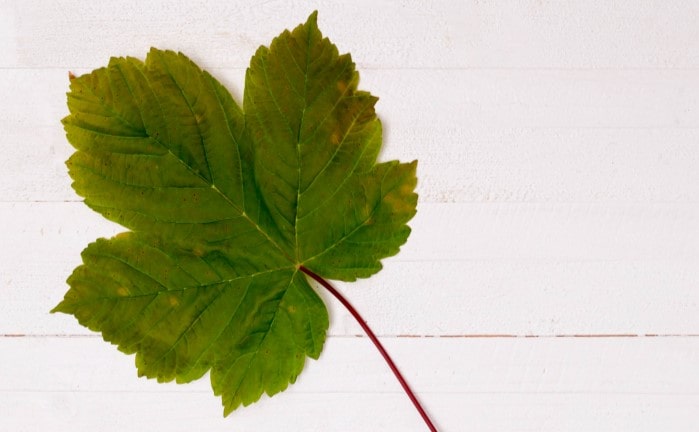
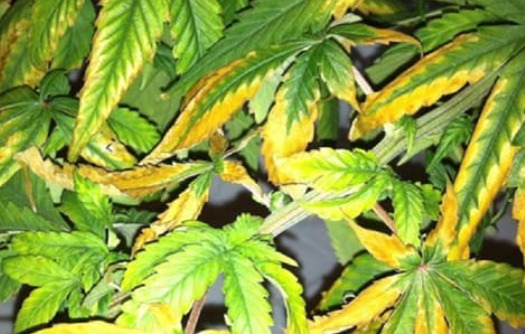
What are the causes of hemp overfertilization?
Over-fertilization in cannabis plants can be caused by a number of factors, often including over-application of fertilizers. A common reason for this is that some growers are not sufficiently informed about the correct fertilization methods or believe that the more fertilizer, the faster and better the plant will grow. In addition, using too high a concentration of water-soluble fertilizers can quickly lead to a build-up of nutrients in the soil, which can be harmful to the plants.
Another problem is that your cannabis plants need different amounts of nutrients at different stages of growth. As already mentioned, you can find more information on this in our article “Fertilizing hemp for a high-yielding harvest”. If you ignore the needs of your plants and apply fertilizer without considering the growth stage, this can also lead to nutrient burn.
Many growers also make the mistake of fertilizing when the soil already has enough nutrients. Without knowledge of the existing nutrient content in the grow medium, it is therefore difficult to find the right amount of fertilizer.
Water also often contains a high concentration of nutrients. If you ignore the nutrient content in the water when watering and use additional fertilizer, this can lead to an excessive accumulation of nutrients.
Climatic conditions are also an important factor.
In certain climates or weather conditions, your cannabis plant’s ability to absorb nutrients may be impaired.Fertilization that is not adjusted under these circumstances can lead to the accumulation of nutrients in the soil, which is detrimental to your plant.
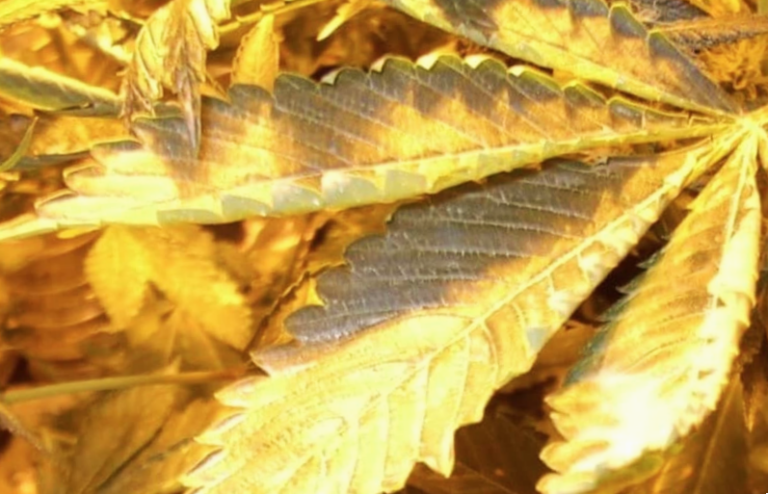
How to remedy nutrient burn?
If you have detected overfertilization in your hemp, it is important to act quickly and remedy the nutrient burn.
First stop fertilizing to prevent further damage. This will give your plant time to recover from the over-fertilization. Then start watering your hemp with clean and pH neutral water. If your growing medium has good drainage, you can flush excess nutrients out of the soil.
The parts of your plant that are burnt or where over-fertilization is visible should be removed. If you notice that your cannabis plant is slowly recovering, you can reintroduce the fertilizer. Nevertheless, you should now reduce the dose and always keep an eye on your plant’s reaction.
Also check whether the environmental conditions of the hemp are appropriate and whether the light, temperature and humidity have been optimally adjusted.
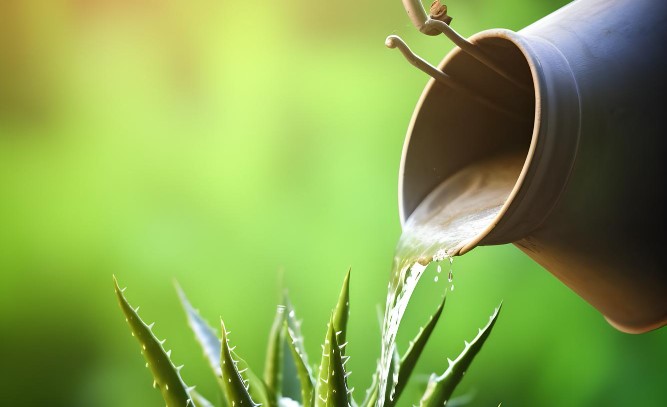
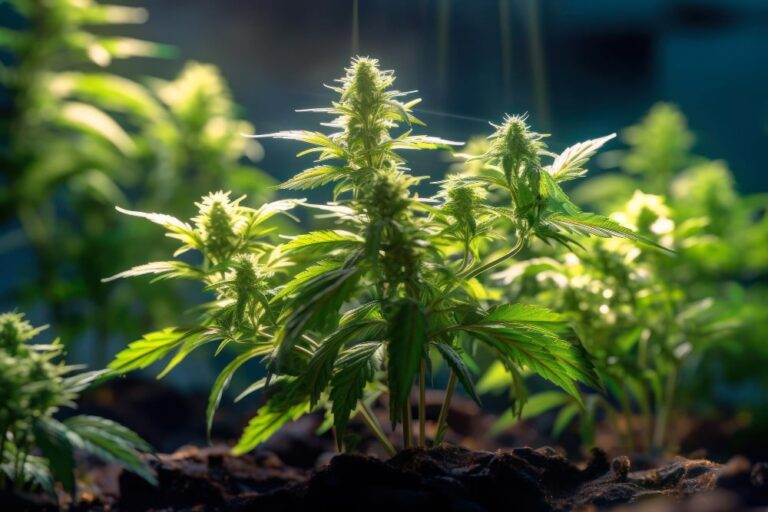
How to avoid cannabis overfertilization?
Of course, it is best if over-fertilization does not occur in the first place. Because the Bonsanto grow components are perfectly matched to each other, you minimize the risk of overfertilization when growing in a Bonsanto grow box considerably if you follow the growing instructions. We would therefore recommend that you use a Bonsanto grow box for growing hemp indoors. The Bonsanto fertilizer “Organic Boost” is beginner-friendly and prevents nutrient burn.
Of course, you can also pay attention to other things to prevent your plant from suffering from nutrient burn.
Inform yourself about the specific nutritional needs of cannabis plants in their different growth phases. This will help you know how much nutrient your plants need and when. Using the right fertilizer is also essential to avoid over-fertilization. The fertilizer should be specially made for cannabis plants and contain the nutrients that your cannabis needs. When fertilizing, always follow the manufacturer’s instructions regarding dosage. If you are a beginner in the field of growing, we recommend using an organic fertilizer, as this releases the nutrients slowly and the risk of over-fertilization is therefore relatively low.
Check the appearance of your plant regularly and look out for signs of over-fertilization. This way you can determine whether your plant is healthy, adjust the dosage in good time and intervene if your hemp is suffering from nutrient burn.
If you don’t have a Bonsanto grow box, you should carry out soil tests at regular intervals to check the nutrient content in the soil. This way you can see whether fertilization is necessary or not. The way you water your plant can also have an influence on the nutrients in the soil. Excessive watering washes all the nutrients out of the soil, while too little water leads to a build-up of nutrients in the soil.
-
Bonsanto® Concentrate ‘EXTREME ENERGY’
Rated 4.67 out of 5$11.99 – $32.00Price range: $11.99 through $32.00 incl. VAT Select options This product has multiple variants. The options may be chosen on the product page
